-
EXECUTIVE SUMMARY
-
1.1.
-
Market Overview
-
Key Findings
-
Market Segmentation
-
1.4.
-
Competitive Landscape
-
Challenges and Opportunities
-
Future
-
Outlook
-
MARKET INTRODUCTION
-
Definition
-
Scope of the study
- Research Objective
- Assumption
- Limitations
-
RESEARCH METHODOLOGY
-
Overview
-
3.2.
-
Data Mining
-
Secondary Research
-
Primary Research
- Breakdown of Primary
-
3.4.1.
-
Primary Interviews and Information Gathering Process
-
Respondents
-
Forecasting Model
-
Market Size Estimation
- Top-Down Approach
-
3.6.1.
-
Bottom-Up Approach
-
Data Triangulation
-
Validation
-
MARKET DYNAMICS
-
Overview
-
Drivers
-
Restraints
-
Opportunities
-
MARKET
-
FACTOR ANALYSIS
-
Value chain Analysis
-
Porter''s Five Forces
- Bargaining Power of Suppliers
- Bargaining Power
- Threat of New Entrants
- Threat of Substitutes
- Intensity of Rivalry
-
Analysis
-
of Buyers
-
COVID-19 Impact Analysis
- Regional Impact
- Opportunity and
-
5.3.1.
-
Market Impact Analysis
-
Threat Analysis
-
AUTOMOTIVE TIMING BELT MARKET, BY APPLICATION
-
(USD BILLION)
-
Passenger Vehicles
-
Commercial Vehicles
-
6.3.
-
Motorcycles
-
Heavy-Duty Vehicles
-
AUTOMOTIVE TIMING BELT MARKET,
-
BY MATERIAL TYPE (USD BILLION)
-
Rubber
-
Polyurethane
-
7.3.
-
Fiberglass Reinforced
-
AUTOMOTIVE TIMING BELT MARKET, BY DISTRIBUTION CHANNEL
-
(USD BILLION)
-
OEM
-
Aftermarket
-
AUTOMOTIVE TIMING BELT
-
MARKET, BY END USE (USD BILLION)
-
Private Use
-
Fleet Use
-
Repair Services
-
AUTOMOTIVE TIMING BELT MARKET, BY REGIONAL (USD
-
BILLION)
-
North America
- US
- Canada
- Germany
- UK
- France
- Italy
- Spain
- Rest of Europe
-
10.2.
-
Europe
-
10.2.4.
-
Russia
-
APAC
- China
- India
- Japan
- Malaysia
- Thailand
- Indonesia
- Rest of APAC
-
10.3.4.
-
South Korea
-
South America
- Brazil
- Argentina
- Rest of South America
-
10.4.2.
-
Mexico
-
MEA
- GCC Countries
- South Africa
- Rest of MEA
-
COMPETITIVE LANDSCAPE
-
Overview
-
11.2.
-
Competitive Analysis
-
Market share Analysis
-
Major Growth
-
Strategy in the Automotive Timing Belt Market
-
Competitive Benchmarking
-
Leading Players in Terms of Number of Developments in the Automotive
-
Timing Belt Market
-
Key developments and growth strategies
- Merger & Acquisitions
- Joint Ventures
-
11.7.1.
-
New Product Launch/Service Deployment
-
Major Players Financial Matrix
- Major Players R&D Expenditure. 2023
-
11.8.1.
-
Sales and Operating Income
-
COMPANY PROFILES
-
Schaeffler AG
- Financial Overview
- Products Offered
- Key Developments
- SWOT
- Key Strategies
-
Analysis
-
C.E. Niehoff and Co.
- Products Offered
- Key Developments
- SWOT Analysis
- Key Strategies
-
12.2.1.
-
Financial Overview
-
Dayco Products
- Financial Overview
- Products Offered
- SWOT Analysis
- Key Strategies
- Financial Overview
- Products
- Key Developments
- SWOT Analysis
-
LLC
-
12.3.3.
-
Key Developments
-
12.4.
-
Ningbo Yuyuan Industrial Co Ltd
-
Offered
-
12.4.5.
-
Key Strategies
-
Gates Corporation
- Financial Overview
- Products Offered
- Key Developments
- SWOT Analysis
- Key Strategies
-
Mitsubishi Electric Corporation
- Products Offered
- Key Developments
- SWOT Analysis
- Key Strategies
-
12.6.1.
-
Financial Overview
-
Tsubakimoto
- Financial Overview
- Products Offered
- SWOT Analysis
- Key Strategies
- Financial Overview
- Products Offered
- Key Developments
- SWOT Analysis
- Key Strategies
-
Chain Co
-
12.7.3.
-
Key Developments
-
12.8.
-
Aisin Seiki Co Ltd
-
Continental AG
- Financial Overview
- Products
- Key Developments
- SWOT Analysis
-
Offered
-
12.9.5.
-
Key Strategies
-
Dura Automotive Systems LLC
- Financial
- Products Offered
- Key Developments
- Key Strategies
-
Overview
-
12.10.4.
-
SWOT Analysis
-
SABIC
- Financial
- Products Offered
- Key Developments
- Key Strategies
-
Overview
-
12.11.4.
-
SWOT Analysis
-
BANDO Chemical Industries
- Financial Overview
- Products Offered
- SWOT Analysis
- Key Strategies
-
Ltd
-
12.12.3.
-
Key Developments
-
Mitsuboshi Belting Ltd
- Financial Overview
- Key Developments
- SWOT Analysis
- Key Strategies
-
12.13.2.
-
Products Offered
-
Schneider Electric
- Financial
- Products Offered
- Key Developments
- Key Strategies
-
Overview
-
12.14.4.
-
SWOT Analysis
-
HuttenesAlbertus Chemische
- Financial Overview
- Products Offered
- Key Developments
- SWOT Analysis
- Key Strategies
-
Werke GmbH
-
APPENDIX
-
References
-
Related Reports
-
LIST
-
OF TABLES
-
LIST OF ASSUMPTIONS
-
NORTH AMERICA AUTOMOTIVE
-
TIMING BELT MARKET SIZE ESTIMATES & FORECAST, BY APPLICATION, 2019-2032 (USD
-
BILLIONS)
-
NORTH AMERICA AUTOMOTIVE TIMING BELT MARKET SIZE ESTIMATES
-
& FORECAST, BY MATERIAL TYPE, 2019-2032 (USD BILLIONS)
-
NORTH
-
AMERICA AUTOMOTIVE TIMING BELT MARKET SIZE ESTIMATES & FORECAST, BY DISTRIBUTION
-
CHANNEL, 2019-2032 (USD BILLIONS)
-
NORTH AMERICA AUTOMOTIVE TIMING
-
BELT MARKET SIZE ESTIMATES & FORECAST, BY END USE, 2019-2032 (USD BILLIONS)
-
NORTH AMERICA AUTOMOTIVE TIMING BELT MARKET SIZE ESTIMATES &
-
FORECAST, BY REGIONAL, 2019-2032 (USD BILLIONS)
-
US AUTOMOTIVE TIMING
-
BELT MARKET SIZE ESTIMATES & FORECAST, BY APPLICATION, 2019-2032 (USD BILLIONS)
-
US AUTOMOTIVE TIMING BELT MARKET SIZE ESTIMATES & FORECAST, BY
-
MATERIAL TYPE, 2019-2032 (USD BILLIONS)
-
US AUTOMOTIVE TIMING BELT
-
MARKET SIZE ESTIMATES & FORECAST, BY DISTRIBUTION CHANNEL, 2019-2032 (USD BILLIONS)
-
US AUTOMOTIVE TIMING BELT MARKET SIZE ESTIMATES & FORECAST,
-
BY END USE, 2019-2032 (USD BILLIONS)
-
US AUTOMOTIVE TIMING BELT MARKET
-
SIZE ESTIMATES & FORECAST, BY REGIONAL, 2019-2032 (USD BILLIONS)
-
TABLE
-
CANADA AUTOMOTIVE TIMING BELT MARKET SIZE ESTIMATES & FORECAST, BY APPLICATION,
-
CANADA AUTOMOTIVE TIMING BELT MARKET SIZE
-
ESTIMATES & FORECAST, BY MATERIAL TYPE, 2019-2032 (USD BILLIONS)
-
TABLE
-
CANADA AUTOMOTIVE TIMING BELT MARKET SIZE ESTIMATES & FORECAST, BY DISTRIBUTION
-
CHANNEL, 2019-2032 (USD BILLIONS)
-
CANADA AUTOMOTIVE TIMING BELT
-
MARKET SIZE ESTIMATES & FORECAST, BY END USE, 2019-2032 (USD BILLIONS)
-
TABLE
-
CANADA AUTOMOTIVE TIMING BELT MARKET SIZE ESTIMATES & FORECAST, BY REGIONAL,
-
EUROPE AUTOMOTIVE TIMING BELT MARKET SIZE
-
ESTIMATES & FORECAST, BY APPLICATION, 2019-2032 (USD BILLIONS)
-
TABLE 18.
-
EUROPE AUTOMOTIVE TIMING BELT MARKET SIZE ESTIMATES & FORECAST, BY MATERIAL
-
TYPE, 2019-2032 (USD BILLIONS)
-
EUROPE AUTOMOTIVE TIMING BELT MARKET
-
SIZE ESTIMATES & FORECAST, BY DISTRIBUTION CHANNEL, 2019-2032 (USD BILLIONS)
-
EUROPE AUTOMOTIVE TIMING BELT MARKET SIZE ESTIMATES & FORECAST,
-
BY END USE, 2019-2032 (USD BILLIONS)
-
EUROPE AUTOMOTIVE TIMING BELT
-
MARKET SIZE ESTIMATES & FORECAST, BY REGIONAL, 2019-2032 (USD BILLIONS)
-
GERMANY AUTOMOTIVE TIMING BELT MARKET SIZE ESTIMATES & FORECAST,
-
BY APPLICATION, 2019-2032 (USD BILLIONS)
-
GERMANY AUTOMOTIVE TIMING
-
BELT MARKET SIZE ESTIMATES & FORECAST, BY MATERIAL TYPE, 2019-2032 (USD BILLIONS)
-
GERMANY AUTOMOTIVE TIMING BELT MARKET SIZE ESTIMATES & FORECAST,
-
BY DISTRIBUTION CHANNEL, 2019-2032 (USD BILLIONS)
-
GERMANY AUTOMOTIVE
-
TIMING BELT MARKET SIZE ESTIMATES & FORECAST, BY END USE, 2019-2032 (USD BILLIONS)
-
GERMANY AUTOMOTIVE TIMING BELT MARKET SIZE ESTIMATES & FORECAST,
-
BY REGIONAL, 2019-2032 (USD BILLIONS)
-
UK AUTOMOTIVE TIMING BELT
-
MARKET SIZE ESTIMATES & FORECAST, BY APPLICATION, 2019-2032 (USD BILLIONS)
-
UK AUTOMOTIVE TIMING BELT MARKET SIZE ESTIMATES & FORECAST, BY MATERIAL
-
TYPE, 2019-2032 (USD BILLIONS)
-
UK AUTOMOTIVE TIMING BELT MARKET
-
SIZE ESTIMATES & FORECAST, BY DISTRIBUTION CHANNEL, 2019-2032 (USD BILLIONS)
-
UK AUTOMOTIVE TIMING BELT MARKET SIZE ESTIMATES & FORECAST,
-
BY END USE, 2019-2032 (USD BILLIONS)
-
UK AUTOMOTIVE TIMING BELT MARKET
-
SIZE ESTIMATES & FORECAST, BY REGIONAL, 2019-2032 (USD BILLIONS)
-
TABLE
-
FRANCE AUTOMOTIVE TIMING BELT MARKET SIZE ESTIMATES & FORECAST, BY APPLICATION,
-
FRANCE AUTOMOTIVE TIMING BELT MARKET SIZE
-
ESTIMATES & FORECAST, BY MATERIAL TYPE, 2019-2032 (USD BILLIONS)
-
TABLE
-
FRANCE AUTOMOTIVE TIMING BELT MARKET SIZE ESTIMATES & FORECAST, BY DISTRIBUTION
-
CHANNEL, 2019-2032 (USD BILLIONS)
-
FRANCE AUTOMOTIVE TIMING BELT
-
MARKET SIZE ESTIMATES & FORECAST, BY END USE, 2019-2032 (USD BILLIONS)
-
TABLE
-
FRANCE AUTOMOTIVE TIMING BELT MARKET SIZE ESTIMATES & FORECAST, BY REGIONAL,
-
RUSSIA AUTOMOTIVE TIMING BELT MARKET SIZE
-
ESTIMATES & FORECAST, BY APPLICATION, 2019-2032 (USD BILLIONS)
-
TABLE 38.
-
RUSSIA AUTOMOTIVE TIMING BELT MARKET SIZE ESTIMATES & FORECAST, BY MATERIAL
-
TYPE, 2019-2032 (USD BILLIONS)
-
RUSSIA AUTOMOTIVE TIMING BELT MARKET
-
SIZE ESTIMATES & FORECAST, BY DISTRIBUTION CHANNEL, 2019-2032 (USD BILLIONS)
-
RUSSIA AUTOMOTIVE TIMING BELT MARKET SIZE ESTIMATES & FORECAST,
-
BY END USE, 2019-2032 (USD BILLIONS)
-
RUSSIA AUTOMOTIVE TIMING BELT
-
MARKET SIZE ESTIMATES & FORECAST, BY REGIONAL, 2019-2032 (USD BILLIONS)
-
ITALY AUTOMOTIVE TIMING BELT MARKET SIZE ESTIMATES & FORECAST, BY
-
APPLICATION, 2019-2032 (USD BILLIONS)
-
ITALY AUTOMOTIVE TIMING BELT
-
MARKET SIZE ESTIMATES & FORECAST, BY MATERIAL TYPE, 2019-2032 (USD BILLIONS)
-
ITALY AUTOMOTIVE TIMING BELT MARKET SIZE ESTIMATES & FORECAST,
-
BY DISTRIBUTION CHANNEL, 2019-2032 (USD BILLIONS)
-
ITALY AUTOMOTIVE
-
TIMING BELT MARKET SIZE ESTIMATES & FORECAST, BY END USE, 2019-2032 (USD BILLIONS)
-
ITALY AUTOMOTIVE TIMING BELT MARKET SIZE ESTIMATES & FORECAST,
-
BY REGIONAL, 2019-2032 (USD BILLIONS)
-
SPAIN AUTOMOTIVE TIMING BELT
-
MARKET SIZE ESTIMATES & FORECAST, BY APPLICATION, 2019-2032 (USD BILLIONS)
-
SPAIN AUTOMOTIVE TIMING BELT MARKET SIZE ESTIMATES & FORECAST, BY
-
MATERIAL TYPE, 2019-2032 (USD BILLIONS)
-
SPAIN AUTOMOTIVE TIMING
-
BELT MARKET SIZE ESTIMATES & FORECAST, BY DISTRIBUTION CHANNEL, 2019-2032 (USD
-
BILLIONS)
-
SPAIN AUTOMOTIVE TIMING BELT MARKET SIZE ESTIMATES &
-
FORECAST, BY END USE, 2019-2032 (USD BILLIONS)
-
SPAIN AUTOMOTIVE
-
TIMING BELT MARKET SIZE ESTIMATES & FORECAST, BY REGIONAL, 2019-2032 (USD BILLIONS)
-
REST OF EUROPE AUTOMOTIVE TIMING BELT MARKET SIZE ESTIMATES &
-
FORECAST, BY APPLICATION, 2019-2032 (USD BILLIONS)
-
REST OF EUROPE
-
AUTOMOTIVE TIMING BELT MARKET SIZE ESTIMATES & FORECAST, BY MATERIAL TYPE, 2019-2032
-
(USD BILLIONS)
-
REST OF EUROPE AUTOMOTIVE TIMING BELT MARKET SIZE
-
ESTIMATES & FORECAST, BY DISTRIBUTION CHANNEL, 2019-2032 (USD BILLIONS)
-
REST OF EUROPE AUTOMOTIVE TIMING BELT MARKET SIZE ESTIMATES & FORECAST,
-
BY END USE, 2019-2032 (USD BILLIONS)
-
REST OF EUROPE AUTOMOTIVE TIMING
-
BELT MARKET SIZE ESTIMATES & FORECAST, BY REGIONAL, 2019-2032 (USD BILLIONS)
-
APAC AUTOMOTIVE TIMING BELT MARKET SIZE ESTIMATES & FORECAST,
-
BY APPLICATION, 2019-2032 (USD BILLIONS)
-
APAC AUTOMOTIVE TIMING
-
BELT MARKET SIZE ESTIMATES & FORECAST, BY MATERIAL TYPE, 2019-2032 (USD BILLIONS)
-
APAC AUTOMOTIVE TIMING BELT MARKET SIZE ESTIMATES & FORECAST,
-
BY DISTRIBUTION CHANNEL, 2019-2032 (USD BILLIONS)
-
APAC AUTOMOTIVE
-
TIMING BELT MARKET SIZE ESTIMATES & FORECAST, BY END USE, 2019-2032 (USD BILLIONS)
-
APAC AUTOMOTIVE TIMING BELT MARKET SIZE ESTIMATES & FORECAST,
-
BY REGIONAL, 2019-2032 (USD BILLIONS)
-
CHINA AUTOMOTIVE TIMING BELT
-
MARKET SIZE ESTIMATES & FORECAST, BY APPLICATION, 2019-2032 (USD BILLIONS)
-
CHINA AUTOMOTIVE TIMING BELT MARKET SIZE ESTIMATES & FORECAST, BY
-
MATERIAL TYPE, 2019-2032 (USD BILLIONS)
-
CHINA AUTOMOTIVE TIMING
-
BELT MARKET SIZE ESTIMATES & FORECAST, BY DISTRIBUTION CHANNEL, 2019-2032 (USD
-
BILLIONS)
-
CHINA AUTOMOTIVE TIMING BELT MARKET SIZE ESTIMATES &
-
FORECAST, BY END USE, 2019-2032 (USD BILLIONS)
-
CHINA AUTOMOTIVE
-
TIMING BELT MARKET SIZE ESTIMATES & FORECAST, BY REGIONAL, 2019-2032 (USD BILLIONS)
-
INDIA AUTOMOTIVE TIMING BELT MARKET SIZE ESTIMATES & FORECAST,
-
BY APPLICATION, 2019-2032 (USD BILLIONS)
-
INDIA AUTOMOTIVE TIMING
-
BELT MARKET SIZE ESTIMATES & FORECAST, BY MATERIAL TYPE, 2019-2032 (USD BILLIONS)
-
INDIA AUTOMOTIVE TIMING BELT MARKET SIZE ESTIMATES & FORECAST,
-
BY DISTRIBUTION CHANNEL, 2019-2032 (USD BILLIONS)
-
INDIA AUTOMOTIVE
-
TIMING BELT MARKET SIZE ESTIMATES & FORECAST, BY END USE, 2019-2032 (USD BILLIONS)
-
INDIA AUTOMOTIVE TIMING BELT MARKET SIZE ESTIMATES & FORECAST,
-
BY REGIONAL, 2019-2032 (USD BILLIONS)
-
JAPAN AUTOMOTIVE TIMING BELT
-
MARKET SIZE ESTIMATES & FORECAST, BY APPLICATION, 2019-2032 (USD BILLIONS)
-
JAPAN AUTOMOTIVE TIMING BELT MARKET SIZE ESTIMATES & FORECAST, BY
-
MATERIAL TYPE, 2019-2032 (USD BILLIONS)
-
JAPAN AUTOMOTIVE TIMING
-
BELT MARKET SIZE ESTIMATES & FORECAST, BY DISTRIBUTION CHANNEL, 2019-2032 (USD
-
BILLIONS)
-
JAPAN AUTOMOTIVE TIMING BELT MARKET SIZE ESTIMATES &
-
FORECAST, BY END USE, 2019-2032 (USD BILLIONS)
-
JAPAN AUTOMOTIVE
-
TIMING BELT MARKET SIZE ESTIMATES & FORECAST, BY REGIONAL, 2019-2032 (USD BILLIONS)
-
SOUTH KOREA AUTOMOTIVE TIMING BELT MARKET SIZE ESTIMATES & FORECAST,
-
BY APPLICATION, 2019-2032 (USD BILLIONS)
-
SOUTH KOREA AUTOMOTIVE
-
TIMING BELT MARKET SIZE ESTIMATES & FORECAST, BY MATERIAL TYPE, 2019-2032 (USD
-
BILLIONS)
-
SOUTH KOREA AUTOMOTIVE TIMING BELT MARKET SIZE ESTIMATES
-
& FORECAST, BY DISTRIBUTION CHANNEL, 2019-2032 (USD BILLIONS)
-
TABLE 80.
-
SOUTH KOREA AUTOMOTIVE TIMING BELT MARKET SIZE ESTIMATES & FORECAST, BY END
-
USE, 2019-2032 (USD BILLIONS)
-
SOUTH KOREA AUTOMOTIVE TIMING BELT
-
MARKET SIZE ESTIMATES & FORECAST, BY REGIONAL, 2019-2032 (USD BILLIONS)
-
MALAYSIA AUTOMOTIVE TIMING BELT MARKET SIZE ESTIMATES & FORECAST,
-
BY APPLICATION, 2019-2032 (USD BILLIONS)
-
MALAYSIA AUTOMOTIVE TIMING
-
BELT MARKET SIZE ESTIMATES & FORECAST, BY MATERIAL TYPE, 2019-2032 (USD BILLIONS)
-
MALAYSIA AUTOMOTIVE TIMING BELT MARKET SIZE ESTIMATES & FORECAST,
-
BY DISTRIBUTION CHANNEL, 2019-2032 (USD BILLIONS)
-
MALAYSIA AUTOMOTIVE
-
TIMING BELT MARKET SIZE ESTIMATES & FORECAST, BY END USE, 2019-2032 (USD BILLIONS)
-
MALAYSIA AUTOMOTIVE TIMING BELT MARKET SIZE ESTIMATES & FORECAST,
-
BY REGIONAL, 2019-2032 (USD BILLIONS)
-
THAILAND AUTOMOTIVE TIMING
-
BELT MARKET SIZE ESTIMATES & FORECAST, BY APPLICATION, 2019-2032 (USD BILLIONS)
-
THAILAND AUTOMOTIVE TIMING BELT MARKET SIZE ESTIMATES & FORECAST,
-
BY MATERIAL TYPE, 2019-2032 (USD BILLIONS)
-
THAILAND AUTOMOTIVE TIMING
-
BELT MARKET SIZE ESTIMATES & FORECAST, BY DISTRIBUTION CHANNEL, 2019-2032 (USD
-
BILLIONS)
-
THAILAND AUTOMOTIVE TIMING BELT MARKET SIZE ESTIMATES
-
& FORECAST, BY END USE, 2019-2032 (USD BILLIONS)
-
THAILAND AUTOMOTIVE
-
TIMING BELT MARKET SIZE ESTIMATES & FORECAST, BY REGIONAL, 2019-2032 (USD BILLIONS)
-
INDONESIA AUTOMOTIVE TIMING BELT MARKET SIZE ESTIMATES & FORECAST,
-
BY APPLICATION, 2019-2032 (USD BILLIONS)
-
INDONESIA AUTOMOTIVE TIMING
-
BELT MARKET SIZE ESTIMATES & FORECAST, BY MATERIAL TYPE, 2019-2032 (USD BILLIONS)
-
INDONESIA AUTOMOTIVE TIMING BELT MARKET SIZE ESTIMATES & FORECAST,
-
BY DISTRIBUTION CHANNEL, 2019-2032 (USD BILLIONS)
-
INDONESIA AUTOMOTIVE
-
TIMING BELT MARKET SIZE ESTIMATES & FORECAST, BY END USE, 2019-2032 (USD BILLIONS)
-
INDONESIA AUTOMOTIVE TIMING BELT MARKET SIZE ESTIMATES & FORECAST,
-
BY REGIONAL, 2019-2032 (USD BILLIONS)
-
REST OF APAC AUTOMOTIVE TIMING
-
BELT MARKET SIZE ESTIMATES & FORECAST, BY APPLICATION, 2019-2032 (USD BILLIONS)
-
REST OF APAC AUTOMOTIVE TIMING BELT MARKET SIZE ESTIMATES &
-
FORECAST, BY MATERIAL TYPE, 2019-2032 (USD BILLIONS)
-
REST OF APAC
-
AUTOMOTIVE TIMING BELT MARKET SIZE ESTIMATES & FORECAST, BY DISTRIBUTION CHANNEL,
-
REST OF APAC AUTOMOTIVE TIMING BELT MARKET
-
SIZE ESTIMATES & FORECAST, BY END USE, 2019-2032 (USD BILLIONS)
-
TABLE
-
REST OF APAC AUTOMOTIVE TIMING BELT MARKET SIZE ESTIMATES & FORECAST, BY
-
REGIONAL, 2019-2032 (USD BILLIONS)
-
SOUTH AMERICA AUTOMOTIVE TIMING
-
BELT MARKET SIZE ESTIMATES & FORECAST, BY APPLICATION, 2019-2032 (USD BILLIONS)
-
SOUTH AMERICA AUTOMOTIVE TIMING BELT MARKET SIZE ESTIMATES &
-
FORECAST, BY MATERIAL TYPE, 2019-2032 (USD BILLIONS)
-
SOUTH AMERICA
-
AUTOMOTIVE TIMING BELT MARKET SIZE ESTIMATES & FORECAST, BY DISTRIBUTION CHANNEL,
-
SOUTH AMERICA AUTOMOTIVE TIMING BELT MARKET
-
SIZE ESTIMATES & FORECAST, BY END USE, 2019-2032 (USD BILLIONS)
-
TABLE
-
SOUTH AMERICA AUTOMOTIVE TIMING BELT MARKET SIZE ESTIMATES & FORECAST,
-
BY REGIONAL, 2019-2032 (USD BILLIONS)
-
BRAZIL AUTOMOTIVE TIMING
-
BELT MARKET SIZE ESTIMATES & FORECAST, BY APPLICATION, 2019-2032 (USD BILLIONS)
-
BRAZIL AUTOMOTIVE TIMING BELT MARKET SIZE ESTIMATES & FORECAST,
-
BY MATERIAL TYPE, 2019-2032 (USD BILLIONS)
-
BRAZIL AUTOMOTIVE TIMING
-
BELT MARKET SIZE ESTIMATES & FORECAST, BY DISTRIBUTION CHANNEL, 2019-2032 (USD
-
BILLIONS)
-
BRAZIL AUTOMOTIVE TIMING BELT MARKET SIZE ESTIMATES &
-
FORECAST, BY END USE, 2019-2032 (USD BILLIONS)
-
BRAZIL AUTOMOTIVE
-
TIMING BELT MARKET SIZE ESTIMATES & FORECAST, BY REGIONAL, 2019-2032 (USD BILLIONS)
-
MEXICO AUTOMOTIVE TIMING BELT MARKET SIZE ESTIMATES & FORECAST,
-
BY APPLICATION, 2019-2032 (USD BILLIONS)
-
MEXICO AUTOMOTIVE TIMING
-
BELT MARKET SIZE ESTIMATES & FORECAST, BY MATERIAL TYPE, 2019-2032 (USD BILLIONS)
-
MEXICO AUTOMOTIVE TIMING BELT MARKET SIZE ESTIMATES & FORECAST,
-
BY DISTRIBUTION CHANNEL, 2019-2032 (USD BILLIONS)
-
MEXICO AUTOMOTIVE
-
TIMING BELT MARKET SIZE ESTIMATES & FORECAST, BY END USE, 2019-2032 (USD BILLIONS)
-
MEXICO AUTOMOTIVE TIMING BELT MARKET SIZE ESTIMATES & FORECAST,
-
BY REGIONAL, 2019-2032 (USD BILLIONS)
-
ARGENTINA AUTOMOTIVE TIMING
-
BELT MARKET SIZE ESTIMATES & FORECAST, BY APPLICATION, 2019-2032 (USD BILLIONS)
-
ARGENTINA AUTOMOTIVE TIMING BELT MARKET SIZE ESTIMATES & FORECAST,
-
BY MATERIAL TYPE, 2019-2032 (USD BILLIONS)
-
ARGENTINA AUTOMOTIVE
-
TIMING BELT MARKET SIZE ESTIMATES & FORECAST, BY DISTRIBUTION CHANNEL, 2019-2032
-
(USD BILLIONS)
-
ARGENTINA AUTOMOTIVE TIMING BELT MARKET SIZE ESTIMATES
-
& FORECAST, BY END USE, 2019-2032 (USD BILLIONS)
-
ARGENTINA
-
AUTOMOTIVE TIMING BELT MARKET SIZE ESTIMATES & FORECAST, BY REGIONAL, 2019-2032
-
(USD BILLIONS)
-
REST OF SOUTH AMERICA AUTOMOTIVE TIMING BELT MARKET
-
SIZE ESTIMATES & FORECAST, BY APPLICATION, 2019-2032 (USD BILLIONS)
-
TABLE
-
REST OF SOUTH AMERICA AUTOMOTIVE TIMING BELT MARKET SIZE ESTIMATES & FORECAST,
-
BY MATERIAL TYPE, 2019-2032 (USD BILLIONS)
-
REST OF SOUTH AMERICA
-
AUTOMOTIVE TIMING BELT MARKET SIZE ESTIMATES & FORECAST, BY DISTRIBUTION CHANNEL,
-
REST OF SOUTH AMERICA AUTOMOTIVE TIMING
-
BELT MARKET SIZE ESTIMATES & FORECAST, BY END USE, 2019-2032 (USD BILLIONS)
-
REST OF SOUTH AMERICA AUTOMOTIVE TIMING BELT MARKET SIZE ESTIMATES
-
& FORECAST, BY REGIONAL, 2019-2032 (USD BILLIONS)
-
MEA AUTOMOTIVE
-
TIMING BELT MARKET SIZE ESTIMATES & FORECAST, BY APPLICATION, 2019-2032 (USD
-
BILLIONS)
-
MEA AUTOMOTIVE TIMING BELT MARKET SIZE ESTIMATES &
-
FORECAST, BY MATERIAL TYPE, 2019-2032 (USD BILLIONS)
-
MEA AUTOMOTIVE
-
TIMING BELT MARKET SIZE ESTIMATES & FORECAST, BY DISTRIBUTION CHANNEL, 2019-2032
-
(USD BILLIONS)
-
MEA AUTOMOTIVE TIMING BELT MARKET SIZE ESTIMATES
-
& FORECAST, BY END USE, 2019-2032 (USD BILLIONS)
-
MEA AUTOMOTIVE
-
TIMING BELT MARKET SIZE ESTIMATES & FORECAST, BY REGIONAL, 2019-2032 (USD BILLIONS)
-
GCC COUNTRIES AUTOMOTIVE TIMING BELT MARKET SIZE ESTIMATES &
-
FORECAST, BY APPLICATION, 2019-2032 (USD BILLIONS)
-
GCC COUNTRIES
-
AUTOMOTIVE TIMING BELT MARKET SIZE ESTIMATES & FORECAST, BY MATERIAL TYPE, 2019-2032
-
(USD BILLIONS)
-
GCC COUNTRIES AUTOMOTIVE TIMING BELT MARKET SIZE
-
ESTIMATES & FORECAST, BY DISTRIBUTION CHANNEL, 2019-2032 (USD BILLIONS)
-
GCC COUNTRIES AUTOMOTIVE TIMING BELT MARKET SIZE ESTIMATES & FORECAST,
-
BY END USE, 2019-2032 (USD BILLIONS)
-
GCC COUNTRIES AUTOMOTIVE TIMING
-
BELT MARKET SIZE ESTIMATES & FORECAST, BY REGIONAL, 2019-2032 (USD BILLIONS)
-
SOUTH AFRICA AUTOMOTIVE TIMING BELT MARKET SIZE ESTIMATES &
-
FORECAST, BY APPLICATION, 2019-2032 (USD BILLIONS)
-
SOUTH AFRICA
-
AUTOMOTIVE TIMING BELT MARKET SIZE ESTIMATES & FORECAST, BY MATERIAL TYPE, 2019-2032
-
(USD BILLIONS)
-
SOUTH AFRICA AUTOMOTIVE TIMING BELT MARKET SIZE
-
ESTIMATES & FORECAST, BY DISTRIBUTION CHANNEL, 2019-2032 (USD BILLIONS)
-
SOUTH AFRICA AUTOMOTIVE TIMING BELT MARKET SIZE ESTIMATES & FORECAST,
-
BY END USE, 2019-2032 (USD BILLIONS)
-
SOUTH AFRICA AUTOMOTIVE TIMING
-
BELT MARKET SIZE ESTIMATES & FORECAST, BY REGIONAL, 2019-2032 (USD BILLIONS)
-
REST OF MEA AUTOMOTIVE TIMING BELT MARKET SIZE ESTIMATES &
-
FORECAST, BY APPLICATION, 2019-2032 (USD BILLIONS)
-
REST OF MEA
-
AUTOMOTIVE TIMING BELT MARKET SIZE ESTIMATES & FORECAST, BY MATERIAL TYPE, 2019-2032
-
(USD BILLIONS)
-
REST OF MEA AUTOMOTIVE TIMING BELT MARKET SIZE ESTIMATES
-
& FORECAST, BY DISTRIBUTION CHANNEL, 2019-2032 (USD BILLIONS)
-
TABLE 145.
-
REST OF MEA AUTOMOTIVE TIMING BELT MARKET SIZE ESTIMATES & FORECAST, BY END
-
USE, 2019-2032 (USD BILLIONS)
-
REST OF MEA AUTOMOTIVE TIMING BELT
-
MARKET SIZE ESTIMATES & FORECAST, BY REGIONAL, 2019-2032 (USD BILLIONS)
-
PRODUCT LAUNCH/PRODUCT DEVELOPMENT/APPROVAL
-
ACQUISITION/PARTNERSHIP
-
LIST OF FIGURES
-
MARKET SYNOPSIS
-
FIGURE
-
NORTH AMERICA AUTOMOTIVE TIMING BELT MARKET ANALYSIS
-
US AUTOMOTIVE
-
TIMING BELT MARKET ANALYSIS BY APPLICATION
-
US AUTOMOTIVE TIMING
-
BELT MARKET ANALYSIS BY MATERIAL TYPE
-
US AUTOMOTIVE TIMING BELT
-
MARKET ANALYSIS BY DISTRIBUTION CHANNEL
-
US AUTOMOTIVE TIMING BELT
-
MARKET ANALYSIS BY END USE
-
US AUTOMOTIVE TIMING BELT MARKET ANALYSIS
-
BY REGIONAL
-
CANADA AUTOMOTIVE TIMING BELT MARKET ANALYSIS BY APPLICATION
-
CANADA AUTOMOTIVE TIMING BELT MARKET ANALYSIS BY MATERIAL TYPE
-
CANADA AUTOMOTIVE TIMING BELT MARKET ANALYSIS BY DISTRIBUTION CHANNEL
-
CANADA AUTOMOTIVE TIMING BELT MARKET ANALYSIS BY END USE
-
FIGURE
-
CANADA AUTOMOTIVE TIMING BELT MARKET ANALYSIS BY REGIONAL
-
EUROPE
-
AUTOMOTIVE TIMING BELT MARKET ANALYSIS
-
GERMANY AUTOMOTIVE TIMING
-
BELT MARKET ANALYSIS BY APPLICATION
-
GERMANY AUTOMOTIVE TIMING BELT
-
MARKET ANALYSIS BY MATERIAL TYPE
-
GERMANY AUTOMOTIVE TIMING BELT
-
MARKET ANALYSIS BY DISTRIBUTION CHANNEL
-
GERMANY AUTOMOTIVE TIMING
-
BELT MARKET ANALYSIS BY END USE
-
GERMANY AUTOMOTIVE TIMING BELT
-
MARKET ANALYSIS BY REGIONAL
-
UK AUTOMOTIVE TIMING BELT MARKET ANALYSIS
-
BY APPLICATION
-
UK AUTOMOTIVE TIMING BELT MARKET ANALYSIS BY MATERIAL
-
TYPE
-
UK AUTOMOTIVE TIMING BELT MARKET ANALYSIS BY DISTRIBUTION
-
CHANNEL
-
UK AUTOMOTIVE TIMING BELT MARKET ANALYSIS BY END USE
-
UK AUTOMOTIVE TIMING BELT MARKET ANALYSIS BY REGIONAL
-
FIGURE
-
FRANCE AUTOMOTIVE TIMING BELT MARKET ANALYSIS BY APPLICATION
-
FIGURE 25.
-
FRANCE AUTOMOTIVE TIMING BELT MARKET ANALYSIS BY MATERIAL TYPE
-
FIGURE 26.
-
FRANCE AUTOMOTIVE TIMING BELT MARKET ANALYSIS BY DISTRIBUTION CHANNEL
-
FIGURE
-
FRANCE AUTOMOTIVE TIMING BELT MARKET ANALYSIS BY END USE
-
FRANCE
-
AUTOMOTIVE TIMING BELT MARKET ANALYSIS BY REGIONAL
-
RUSSIA AUTOMOTIVE
-
TIMING BELT MARKET ANALYSIS BY APPLICATION
-
RUSSIA AUTOMOTIVE TIMING
-
BELT MARKET ANALYSIS BY MATERIAL TYPE
-
RUSSIA AUTOMOTIVE TIMING
-
BELT MARKET ANALYSIS BY DISTRIBUTION CHANNEL
-
RUSSIA AUTOMOTIVE
-
TIMING BELT MARKET ANALYSIS BY END USE
-
RUSSIA AUTOMOTIVE TIMING
-
BELT MARKET ANALYSIS BY REGIONAL
-
ITALY AUTOMOTIVE TIMING BELT MARKET
-
ANALYSIS BY APPLICATION
-
ITALY AUTOMOTIVE TIMING BELT MARKET ANALYSIS
-
BY MATERIAL TYPE
-
ITALY AUTOMOTIVE TIMING BELT MARKET ANALYSIS BY
-
DISTRIBUTION CHANNEL
-
ITALY AUTOMOTIVE TIMING BELT MARKET ANALYSIS
-
BY END USE
-
ITALY AUTOMOTIVE TIMING BELT MARKET ANALYSIS BY REGIONAL
-
SPAIN AUTOMOTIVE TIMING BELT MARKET ANALYSIS BY APPLICATION
-
SPAIN AUTOMOTIVE TIMING BELT MARKET ANALYSIS BY MATERIAL TYPE
-
FIGURE
-
SPAIN AUTOMOTIVE TIMING BELT MARKET ANALYSIS BY DISTRIBUTION CHANNEL
-
FIGURE
-
SPAIN AUTOMOTIVE TIMING BELT MARKET ANALYSIS BY END USE
-
SPAIN
-
AUTOMOTIVE TIMING BELT MARKET ANALYSIS BY REGIONAL
-
REST OF EUROPE
-
AUTOMOTIVE TIMING BELT MARKET ANALYSIS BY APPLICATION
-
REST OF EUROPE
-
AUTOMOTIVE TIMING BELT MARKET ANALYSIS BY MATERIAL TYPE
-
REST OF
-
EUROPE AUTOMOTIVE TIMING BELT MARKET ANALYSIS BY DISTRIBUTION CHANNEL
-
FIGURE
-
REST OF EUROPE AUTOMOTIVE TIMING BELT MARKET ANALYSIS BY END USE
-
FIGURE
-
REST OF EUROPE AUTOMOTIVE TIMING BELT MARKET ANALYSIS BY REGIONAL
-
FIGURE
-
APAC AUTOMOTIVE TIMING BELT MARKET ANALYSIS
-
CHINA AUTOMOTIVE
-
TIMING BELT MARKET ANALYSIS BY APPLICATION
-
CHINA AUTOMOTIVE TIMING
-
BELT MARKET ANALYSIS BY MATERIAL TYPE
-
CHINA AUTOMOTIVE TIMING BELT
-
MARKET ANALYSIS BY DISTRIBUTION CHANNEL
-
CHINA AUTOMOTIVE TIMING
-
BELT MARKET ANALYSIS BY END USE
-
CHINA AUTOMOTIVE TIMING BELT MARKET
-
ANALYSIS BY REGIONAL
-
INDIA AUTOMOTIVE TIMING BELT MARKET ANALYSIS
-
BY APPLICATION
-
INDIA AUTOMOTIVE TIMING BELT MARKET ANALYSIS BY
-
MATERIAL TYPE
-
INDIA AUTOMOTIVE TIMING BELT MARKET ANALYSIS BY DISTRIBUTION
-
CHANNEL
-
INDIA AUTOMOTIVE TIMING BELT MARKET ANALYSIS BY END USE
-
INDIA AUTOMOTIVE TIMING BELT MARKET ANALYSIS BY REGIONAL
-
FIGURE
-
JAPAN AUTOMOTIVE TIMING BELT MARKET ANALYSIS BY APPLICATION
-
FIGURE 61.
-
JAPAN AUTOMOTIVE TIMING BELT MARKET ANALYSIS BY MATERIAL TYPE
-
JAPAN
-
AUTOMOTIVE TIMING BELT MARKET ANALYSIS BY DISTRIBUTION CHANNEL
-
FIGURE 63.
-
JAPAN AUTOMOTIVE TIMING BELT MARKET ANALYSIS BY END USE
-
JAPAN AUTOMOTIVE
-
TIMING BELT MARKET ANALYSIS BY REGIONAL
-
SOUTH KOREA AUTOMOTIVE
-
TIMING BELT MARKET ANALYSIS BY APPLICATION
-
SOUTH KOREA AUTOMOTIVE
-
TIMING BELT MARKET ANALYSIS BY MATERIAL TYPE
-
SOUTH KOREA AUTOMOTIVE
-
TIMING BELT MARKET ANALYSIS BY DISTRIBUTION CHANNEL
-
SOUTH KOREA
-
AUTOMOTIVE TIMING BELT MARKET ANALYSIS BY END USE
-
SOUTH KOREA AUTOMOTIVE
-
TIMING BELT MARKET ANALYSIS BY REGIONAL
-
MALAYSIA AUTOMOTIVE TIMING
-
BELT MARKET ANALYSIS BY APPLICATION
-
MALAYSIA AUTOMOTIVE TIMING
-
BELT MARKET ANALYSIS BY MATERIAL TYPE
-
MALAYSIA AUTOMOTIVE TIMING
-
BELT MARKET ANALYSIS BY DISTRIBUTION CHANNEL
-
MALAYSIA AUTOMOTIVE
-
TIMING BELT MARKET ANALYSIS BY END USE
-
MALAYSIA AUTOMOTIVE TIMING
-
BELT MARKET ANALYSIS BY REGIONAL
-
THAILAND AUTOMOTIVE TIMING BELT
-
MARKET ANALYSIS BY APPLICATION
-
THAILAND AUTOMOTIVE TIMING BELT
-
MARKET ANALYSIS BY MATERIAL TYPE
-
THAILAND AUTOMOTIVE TIMING BELT
-
MARKET ANALYSIS BY DISTRIBUTION CHANNEL
-
THAILAND AUTOMOTIVE TIMING
-
BELT MARKET ANALYSIS BY END USE
-
THAILAND AUTOMOTIVE TIMING BELT
-
MARKET ANALYSIS BY REGIONAL
-
INDONESIA AUTOMOTIVE TIMING BELT MARKET
-
ANALYSIS BY APPLICATION
-
INDONESIA AUTOMOTIVE TIMING BELT MARKET
-
ANALYSIS BY MATERIAL TYPE
-
INDONESIA AUTOMOTIVE TIMING BELT MARKET
-
ANALYSIS BY DISTRIBUTION CHANNEL
-
INDONESIA AUTOMOTIVE TIMING BELT
-
MARKET ANALYSIS BY END USE
-
INDONESIA AUTOMOTIVE TIMING BELT MARKET
-
ANALYSIS BY REGIONAL
-
REST OF APAC AUTOMOTIVE TIMING BELT MARKET
-
ANALYSIS BY APPLICATION
-
REST OF APAC AUTOMOTIVE TIMING BELT MARKET
-
ANALYSIS BY MATERIAL TYPE
-
REST OF APAC AUTOMOTIVE TIMING BELT MARKET
-
ANALYSIS BY DISTRIBUTION CHANNEL
-
REST OF APAC AUTOMOTIVE TIMING
-
BELT MARKET ANALYSIS BY END USE
-
REST OF APAC AUTOMOTIVE TIMING
-
BELT MARKET ANALYSIS BY REGIONAL
-
SOUTH AMERICA AUTOMOTIVE TIMING
-
BELT MARKET ANALYSIS
-
BRAZIL AUTOMOTIVE TIMING BELT MARKET ANALYSIS
-
BY APPLICATION
-
BRAZIL AUTOMOTIVE TIMING BELT MARKET ANALYSIS BY
-
MATERIAL TYPE
-
BRAZIL AUTOMOTIVE TIMING BELT MARKET ANALYSIS BY
-
DISTRIBUTION CHANNEL
-
BRAZIL AUTOMOTIVE TIMING BELT MARKET ANALYSIS
-
BY END USE
-
BRAZIL AUTOMOTIVE TIMING BELT MARKET ANALYSIS BY REGIONAL
-
MEXICO AUTOMOTIVE TIMING BELT MARKET ANALYSIS BY APPLICATION
-
MEXICO AUTOMOTIVE TIMING BELT MARKET ANALYSIS BY MATERIAL TYPE
-
MEXICO AUTOMOTIVE TIMING BELT MARKET ANALYSIS BY DISTRIBUTION CHANNEL
-
MEXICO AUTOMOTIVE TIMING BELT MARKET ANALYSIS BY END USE
-
FIGURE
-
MEXICO AUTOMOTIVE TIMING BELT MARKET ANALYSIS BY REGIONAL
-
FIGURE 101.
-
ARGENTINA AUTOMOTIVE TIMING BELT MARKET ANALYSIS BY APPLICATION
-
FIGURE 102.
-
ARGENTINA AUTOMOTIVE TIMING BELT MARKET ANALYSIS BY MATERIAL TYPE
-
FIGURE 103.
-
ARGENTINA AUTOMOTIVE TIMING BELT MARKET ANALYSIS BY DISTRIBUTION CHANNEL
-
FIGURE
-
ARGENTINA AUTOMOTIVE TIMING BELT MARKET ANALYSIS BY END USE
-
FIGURE 105.
-
ARGENTINA AUTOMOTIVE TIMING BELT MARKET ANALYSIS BY REGIONAL
-
REST
-
OF SOUTH AMERICA AUTOMOTIVE TIMING BELT MARKET ANALYSIS BY APPLICATION
-
FIGURE
-
REST OF SOUTH AMERICA AUTOMOTIVE TIMING BELT MARKET ANALYSIS BY MATERIAL TYPE
-
REST OF SOUTH AMERICA AUTOMOTIVE TIMING BELT MARKET ANALYSIS BY
-
DISTRIBUTION CHANNEL
-
REST OF SOUTH AMERICA AUTOMOTIVE TIMING BELT
-
MARKET ANALYSIS BY END USE
-
REST OF SOUTH AMERICA AUTOMOTIVE TIMING
-
BELT MARKET ANALYSIS BY REGIONAL
-
MEA AUTOMOTIVE TIMING BELT MARKET
-
ANALYSIS
-
GCC COUNTRIES AUTOMOTIVE TIMING BELT MARKET ANALYSIS
-
BY APPLICATION
-
GCC COUNTRIES AUTOMOTIVE TIMING BELT MARKET ANALYSIS
-
BY MATERIAL TYPE
-
GCC COUNTRIES AUTOMOTIVE TIMING BELT MARKET ANALYSIS
-
BY DISTRIBUTION CHANNEL
-
GCC COUNTRIES AUTOMOTIVE TIMING BELT MARKET
-
ANALYSIS BY END USE
-
GCC COUNTRIES AUTOMOTIVE TIMING BELT MARKET
-
ANALYSIS BY REGIONAL
-
SOUTH AFRICA AUTOMOTIVE TIMING BELT MARKET
-
ANALYSIS BY APPLICATION
-
SOUTH AFRICA AUTOMOTIVE TIMING BELT MARKET
-
ANALYSIS BY MATERIAL TYPE
-
SOUTH AFRICA AUTOMOTIVE TIMING BELT
-
MARKET ANALYSIS BY DISTRIBUTION CHANNEL
-
SOUTH AFRICA AUTOMOTIVE
-
TIMING BELT MARKET ANALYSIS BY END USE
-
SOUTH AFRICA AUTOMOTIVE
-
TIMING BELT MARKET ANALYSIS BY REGIONAL
-
REST OF MEA AUTOMOTIVE
-
TIMING BELT MARKET ANALYSIS BY APPLICATION
-
REST OF MEA AUTOMOTIVE
-
TIMING BELT MARKET ANALYSIS BY MATERIAL TYPE
-
REST OF MEA AUTOMOTIVE
-
TIMING BELT MARKET ANALYSIS BY DISTRIBUTION CHANNEL
-
REST OF MEA
-
AUTOMOTIVE TIMING BELT MARKET ANALYSIS BY END USE
-
REST OF MEA
-
AUTOMOTIVE TIMING BELT MARKET ANALYSIS BY REGIONAL
-
KEY BUYING
-
CRITERIA OF AUTOMOTIVE TIMING BELT MARKET
-
RESEARCH PROCESS OF
-
MRFR
-
DRO ANALYSIS OF AUTOMOTIVE TIMING BELT MARKET
-
FIGURE
-
DRIVERS IMPACT ANALYSIS: AUTOMOTIVE TIMING BELT MARKET
-
RESTRAINTS
-
IMPACT ANALYSIS: AUTOMOTIVE TIMING BELT MARKET
-
SUPPLY / VALUE
-
CHAIN: AUTOMOTIVE TIMING BELT MARKET
-
AUTOMOTIVE TIMING BELT MARKET,
-
BY APPLICATION, 2024 (% SHARE)
-
AUTOMOTIVE TIMING BELT MARKET,
-
BY APPLICATION, 2019 TO 2032 (USD Billions)
-
AUTOMOTIVE TIMING
-
BELT MARKET, BY MATERIAL TYPE, 2024 (% SHARE)
-
AUTOMOTIVE TIMING
-
BELT MARKET, BY MATERIAL TYPE, 2019 TO 2032 (USD Billions)
-
AUTOMOTIVE
-
TIMING BELT MARKET, BY DISTRIBUTION CHANNEL, 2024 (% SHARE)
-
AUTOMOTIVE
-
TIMING BELT MARKET, BY DISTRIBUTION CHANNEL, 2019 TO 2032 (USD Billions)
-
FIGURE
-
AUTOMOTIVE TIMING BELT MARKET, BY END USE, 2024 (% SHARE)
-
FIGURE 140.
-
AUTOMOTIVE TIMING BELT MARKET, BY END USE, 2019 TO 2032 (USD Billions)
-
FIGURE
-
AUTOMOTIVE TIMING BELT MARKET, BY REGIONAL, 2024 (% SHARE)
-
FIGURE 142.
-
AUTOMOTIVE TIMING BELT MARKET, BY REGIONAL, 2019 TO 2032 (USD Billions)
-
FIGURE
-
BENCHMARKING OF MAJOR COMPETITORS

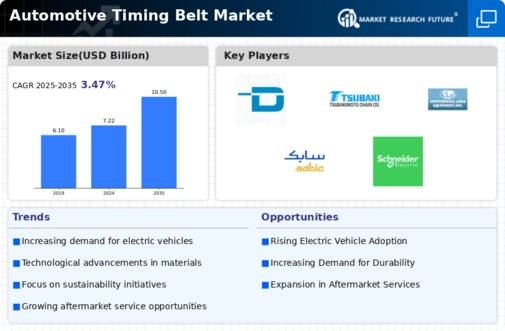
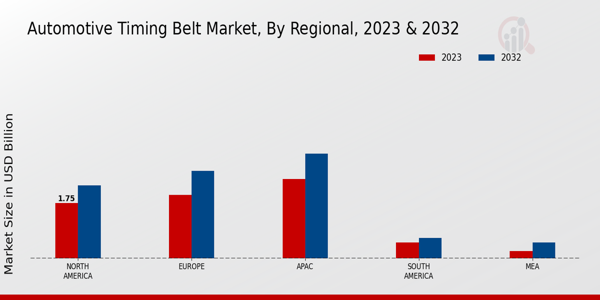
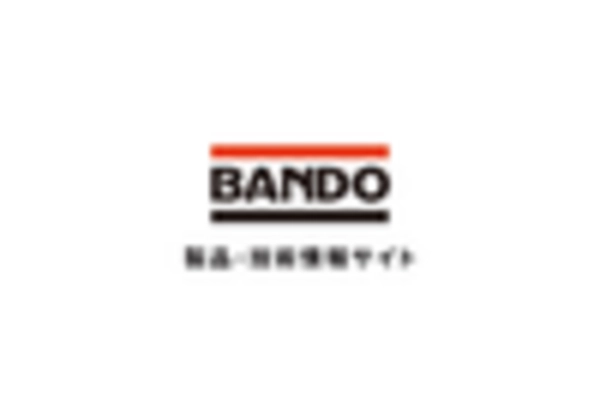

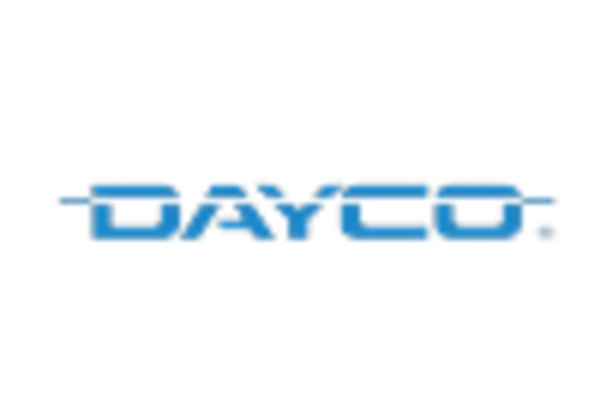
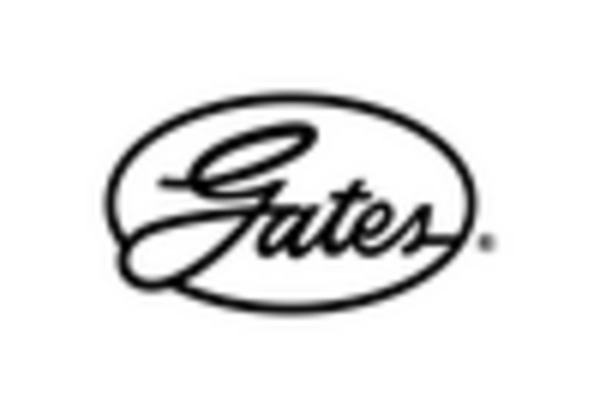



Leave a Comment